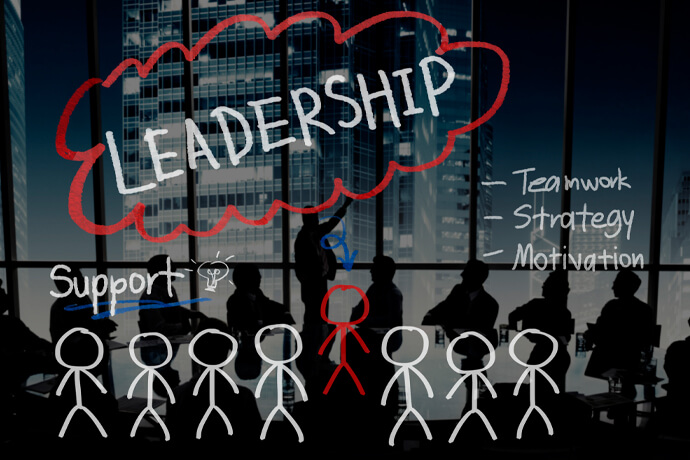 SPEAKERS
SPEAKERS
 TOPICS
TOPICS
Empowerment is key to unlocking your workforce's full potential. In this blog, we explore how employee empowerment impacts motivation, engagement, and job satisfaction.

We also provide practical strategies for identifying training needs, implementing effective programs, and measuring their impact on performance and retention. Let's get started.
Employee development is vital for the success of any organization. A personalized development plan, tailored to each employee's needs and aspirations, is a powerful tool for achieving this.
In fact, a study by the Association for Talent Development revealed that companies with comprehensive employee development programs experienced a 218% increase in revenue per employee compared to those without such programs. (source)
Another critical aspect influenced by development opportunities is employee engagement. Engaged employees are more likely to go the extra mile, resulting in higher levels of customer satisfaction and loyalty for your business.
Moreover, employee development provides avenues for personal growth and skill building, fostering a culture of engagement and commitment within your organization.
According to Gallup, organizations with engaged employees outperform their competitors by 147% in earnings per share.
Employee development also contributes to talent retention. When employees feel valued and supported in their professional journey, they are more likely to stay with the organization.
Research by the Corporate Leadership Council suggests that companies with effective development programs have a 25% higher employee retention rate. (source)
Why do training and development programs exist? To maintain a competitive edge in the ever-evolving industry, align employees' efforts for maximum organizational success, and foster a supportive environment that values individual skills and aspirations.
Make sure you design programs that work in the best interests of your employees and organization.
By following these steps, you can create a comprehensive program that meets the needs of both individuals and the organization as a whole.

Designing effective employee development programs is no small feat. The role of a training program manager is vital in unlocking the potential within the workforce.
To create a successful program, it is important to establish clear benchmarks that act as guiding beacons on the path to success. These benchmarks can include measurable performance indicators, competency assessments, and skill mastery levels that employees strive to achieve throughout their development journey.
Crafting a comprehensive syllabus that encompasses the necessary skills and knowledge is the next step. Consider it as a roadmap, leading employees towards growth and excellence. Adding a touch of creativity to the learning experience can make it captivating and enjoyable.
Leaders play a pivotal role in this endeavor, inspiring and guiding employees toward their full potential. As the saying goes, "A leader is one who knows the way, goes the way, and shows the way."
Incorporating a variety of training methods and activities keeps the programs engaging and interactive. Workshops, simulations, team projects, and even gamification can add excitement and effectiveness.
Measuring progress along the way through feedback and insights is crucial. This valuable information helps refine and enhance the programs.
Lastly, fostering a supportive environment where employees feel safe to explore and take risks is essential. Encourage collaboration, open communication, and embrace a growth mindset. Teamwork is the catalyst for achieving remarkable outcomes.
Employee development programs are a valuable investment that benefits both employees and the organization. It's not just about formal training; it's about creating a culture of growth, learning, and empowerment.
Many employees face the challenge of limited opportunities for skill enhancement and career progression. By implementing development programs, organizations address this challenge and provide avenues for employees to expand their knowledge, acquire new skills, and advance in their careers. This fosters a sense of fulfillment, motivation, and loyalty among employees.
For the organization, employee development programs lead to a more skilled and versatile workforce. This translates into improved productivity, enhanced innovation, and a competitive edge in the market. As employees grow and develop, they contribute to the overall success of the organization and its ability to adapt to changing business landscapes.
It's a win-win situation. Employees gain personal and professional growth, while the organization benefits from increased employee engagement, reduced turnover, and positive work culture. Development programs can take various forms, including mentorship programs, job rotations, cross-functional projects, and even self-paced online learning platforms.

To understand the effectiveness of development programs, measuring their impact is a must. Consider these eye-opening statistics that demonstrate the value of measurement:
That brings us to the next question: how to measure the impact of employee development on organizational performance and employee retention?
When designing an employee development program, several key considerations can contribute to its success:
Perform a gap analysis: Conduct a thorough assessment of the current skills and competencies of your workforce. This analysis will help identify areas where there are gaps between the existing skill set and the desired skills needed for the organization's growth.
Make a list of desired skills: Clearly define the specific skills and competencies that are crucial for individual and organizational success. For example, if you're a technology company aiming to embrace emerging technologies, you might prioritize skills like artificial intelligence, data analytics, or cloud computing.
Seek input from employees: Involve employees in the program design process. Conduct surveys, interviews, or focus groups to gather their feedback, insights, and career aspirations. This involvement ensures that the program meets their needs and fosters a sense of ownership and engagement.
Explore training options: Research various training methods and resources that align with the identified skills and competencies. This can include internal or external workshops, online courses, mentoring programs, or cross-functional projects. Consider a blended approach that combines different methods to cater to diverse learning preferences.
Invite expert speakers or trainers: Engage industry experts or internal subject matter experts to deliver engaging and informative sessions. Their expertise and real-world examples can enhance the learning experience and provide valuable insights.
Set measurable goals: Clearly define the expected outcomes and establish key performance indicators (KPIs) to track the program's effectiveness. For example, if the program aims to enhance customer service skills, the KPIs could include customer satisfaction ratings, response times, or customer feedback.
Provide ongoing support: Offer post-training support through coaching, mentoring, or peer learning circles. This support helps employees apply their newly acquired skills in practical scenarios and reinforces their learning.
How does empowerment impact employees?
→ Empowerment enhances employee motivation, engagement, and job satisfaction. It fosters a sense of ownership, autonomy, and responsibility, leading to increased productivity, innovation, and positive work culture.
How can I identify the training and development needs of my employees?
→ Conduct regular performance assessments, gather feedback from managers and peers, and encourage self-reflection. Utilize employee surveys, skills assessments, and career advancement discussions to identify areas for improvement and align development initiatives accordingly.
How can I implement employee development programs in the workplace effectively?
→ Start by setting clear objectives, involving employees in program design, providing diverse learning opportunities, and offering ongoing support. Create a supportive environment, leverage technology, and continuously evaluate and adapt the programs based on feedback.
How can I measure the impact of employee development on our organizational performance and employee retention?
→ Utilize metrics such as performance indicators, employee engagement surveys, turnover rates, promotion rates, and productivity measures. Conduct pre- and post-training assessments, gather feedback, and track key performance indicators to gauge the impact on organizational performance and employee retention.